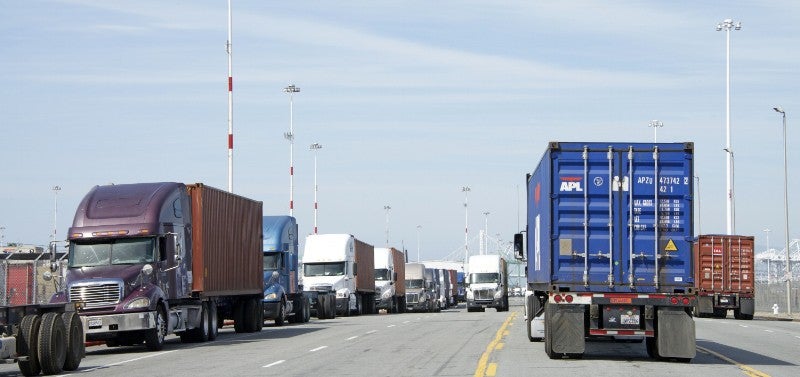
For its size and measure, the U.S. freight industry did take quite a while to accommodate technological interventions into its workflow. Nonetheless, the ecosystem is now teeming with startups which bring in change by optimizing operations, innovating on business models, providing predictive analytics, and creating digital marketplaces for easier carrier-shipper cohesion.
Optimal Dynamics, a startup based out of New York, is looking to help large fleets by automating the process of finding the right loads for their trucks, through AI and machine learning analytics. “We are built over three decades of research and development at Princeton University in New Jersey, which was the reason for the company to be founded. We have two divisions in the company, with one called the Smart-TL and the other being OD Labs,” said Daniel Powell, president, and CEO of Optimal Dynamics.
Smart-TL is a solution that Optimal Dynamics is building on in association with Hub Group, where they are automating the process of sending loads from a broker or a shipper to large fleets. Powell mentioned that the startup concentrated on deviating from the general digital freight marketplace rhetoric, which catered to the owner-operators and fleets that run only a handful of trucks.
“In our Smart-TL solution, instead of giving fleets an app where they can swipe through a ton of loads, every load we show them is something that fits in their carriers – which they can quickly click accept and move on with their business,” said Powell.
The other segment of the company is OD Labs, which is a bit futuristic when compared to the above said, in a way that it looks to work with large ecommerce companies to optimize their logistics operations. “The goal of OD Labs is not to just build a one-off solution but to build a repeatable AI tool for the entire logistics industry. It would be a plug-and-play solution that can help big logistics providers optimize their network,” said Powell.
The initial solution of Optimal Dynamics was envisioned about a decade earlier, in collaboration between Princeton’s CASTLE Lab and Schneider National, a large trucking logistics company – a solution that Powell’s father was a part of. “They worked together on a solution that ended up saving Schneider National about $40 million a year, and thus creating a huge impact,” said Powell. After the success of this project, Powell’s father had the insight to repurpose it to the trucking ecosystem at large, bringing in a lot more detail to the solution and making it a scalable product in a commercial setting.
“It is very hard to model fleets, as it requires people to handle the uncertainties of day-to-day operations, and to be able to plan for the future. Currently, for owner-operators, you have the Ubers for truckloads that give you a location on the app to find the closest load, and you can go off in that direction,” said Powell. “But it doesn’t work when you’re planning for the future. We offer that, and provide loads up to a week in advance, with over 95% accuracy. Which means that the load we offer, say five days in advance, would have a driver nearby and available on time for the pickup.”
The practicality of finding loads in advance, Powell insisted, would help carriers get ahead of their competition, as they could plan their network flow further in advance than they usually could. “We also work with fleets directly, and the fleets don’t just take all their loads from an app. When we offer them a load, we make sure that the load does not interfere with any of their other existing networks,” he said. “We have an app that has the tech to understand what the fleet is doing and what it would be doing days into the future.”
Optimal Dynamics has worked with a few clients till date and has had a few beta releases, but Powell explained that they are now at a stage where they are looking to press on the marketing efforts to push the platform to a broader audience.
“We have got great feedback from companies that say the solution helps them maintaining scalable growth and assist in planning their networks better,” he said. “Our systems can do most of the groundwork that people do, and thus create more robust and efficient networks. For now, it is about creating more partnerships for us to build more trust with our carriers and to integrate with carrier TMS for gaining more data, which we could leverage to provide a better solution.”







